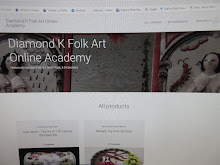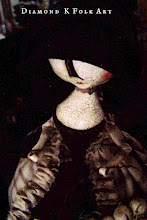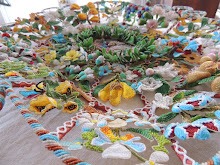Lady's 1810-1820 Nankeen Walking Boots
Today I wanted to share this wonderful pair of c1810-20 Lady's Nankeen Walking boots with you~ of special interest of you are a Jane Austen fan, as she wrote often about the difficulty of finding good sturdy boots for walking~ indeed, in an era that shoes for the lady were quite delicate, in both construction and materials, the new walking boots were all the rage for a Ladye of Fashion

This 1812 fashion plate shows a young Miss out and about in her green walking boots. One cannot see much detail other than they are definitely above ankle height, and front lacing. The soles are very flat, nearly no heel, and there is a bit of fringing at the tops for decoration.
Upon first glance, if you were unfamiliar with the era, you may mistake these for being canvas swimming shoes so popular in the 1890s...so lets take a closer look and see what we have going on, that really makes these boots special
Looking at the inside, there is an illegible inscription in the right boot made on the linen lining. Below the linen footbed can be seen. To the left edge, the silk binding can be seen, along with the handmade eyelet holes for the laces. Note how instead of beginning anew and knotting the thread at each eyelet hole, the holes have all been stitched in a row, with the trail of back stitching traveling from one to the next. This is carefully done, thru the linen lining only, not thru to the outer fabric
Love love LOVE the tongues! Tall and narrow, lined in linen and tipped with a silk binding at the top. The tongue reaches to about 1/2" below the top of the boot
Pretty silk ribbon bows trim the vamps, very popular for shoe trimming in the first quarter 19thc. They give a quite delicate and feminine look to an otherwise plain everyday boot
They also help hide the two rows of stitching that attaches the tongues to the inside of the vamp.
I thought this little detail very interesting, the addition of skye blue kid leather points to the center back seams, obviously to reinforce where a person would hold the back of the boot and pull it up the leg. These are exactly the same on both boots
I can remember Emma, while walking along in Jane Austen's book of the same, using her broken lace as an excuse to tarry behind~ The Lady who wore these did not let such a thing get in her way, she simply knotted the broken lace together at the point of the break and kept on. Both retain their original lace by the way, this one the entire length with long metal tip, the right boot with but a fragment. I have read in more than one place that it was the fashion to have the lace match the color of the shoe/boot, and in this case, it certainly does
Plain silk binds the seams and openings~ these are tall boots, not at all 'half boots', but full Lady's Boots standing 8" tall. I think I can count on one hand the full boots of the Regency Era that I have seen in the flesh~ one more commonly sees the much lower half boots that came just to the height of one's ankle bone
10" from heel to toe, its nice to see proof not all of our ancestors were Lilliputians!
The back of the boots are cut to follow the gracious curve of the back of the calf & heel, with the CB point being slightly taller than the front
Very low heel, a single thickness stitched on over the back sole
Quite a bit of spring in the toes (upturn)
Made straight last, (no right or left swing of the soles). These have even wear with a bit of organic material still retained in the nooks and cranys, most definitely used for walking, but on a well kept path and certainly not out in any foul weather. One advantage of the Nankeen in shoes and boots was that it could be easily washed. These dont show me any reason to think they were ever washed at any point in their lives
Heels worn pretty even, a smidge of more heavy wear to the outer heel, but not much. Our Lady was a graceful walker~
This 1813 fashion plate is a good example of how these would have looked in use. Colors were very, very popular in both shoes and boots for much of the early 19th century, but a good neutral color could be worn with several outfits, and were much more sensible for the average Lady to have in her wardrobe.
























1 comment:
Thank you very much for sharing this beautiful pair of boots in detail. Indeed it's very rare to see them...and in such mint condition.
Sabine
Post a Comment